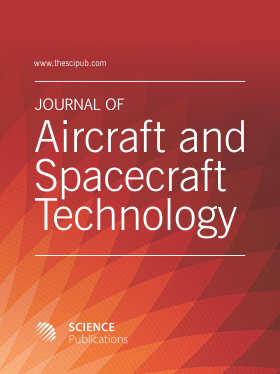Some Special Aircraft
- 1 Bucharest Polytechnic University, Romania
- 2 Second University of Naples, Italy
- 3 American University of Ras Al Khaimah, United Arab Emirates
Abstract
In this study, the authors want to present a few more distinct aircraft from a constructive and functional point of view. Their role has often been determined by the need to achieve or fulfill certain more or less strategic objectives. Such ships will also be built in the future more and more often in order to be able to respond to all new flight requirements and to meet, under optimal conditions, the new and increasingly demanding requirements. Many of the new special aircraft have been built so far to achieve special tasks, or at the request of the defense ministry in some highly developed countries, even with the United States of America. The PA-23 was the first twin-engine design from Piper and was developed from a proposed "Twin Stinson" design inherited when Piper bought the Stinson Division of the Consolidated Vultee Aircraft Corporation. The prototype PA-23 was a four-seater low-wing all-metal monoplane with a twin tail, powered by a two 125 hp Lycoming O-290-D piston engines the prototype first flew 2 March 1952. The aircraft performed badly and it was redesigned with a single vertical stabilizer and an all-metal rear fuselage and more powerful 150 hp Lycoming O-320-A engines. Two new prototypes of re-designed aircraft now named Apache were built in 1953 and entered production in 1954; 1,231 were built. In 1958, the Apache 160 was produced by upgrading the engines to 160 hp (119 kW) and 816 were built before being superseded by the Apache 235, which went to 235 hp (175 kW) engines and swept tail surfaces (119 built). In 1958 an upgraded version with 250 hp (186 kW) Lycoming O-540 engines and adding a swept vertical tail was produced as the PA-23-250 and was named Aztec. These first models came in a five-seat configuration which became available in 1959. In 1961 a longer nosed variant the Aztec B entered production. The later models of the Aztec were equipped with IO-540 fuel injected engines and six-seat capacity and continued in production until 1982. There were also turbocharged versions of the later models, which were able to fly at higher altitudes. The US Navy acquired 20 Aztecs, designating them UO-1, which changed to U-11A when unified designations were adopted in 1962. In 1974, Piper produced a single experimental PA-41P Pressurized Aztec concept.
DOI: https://doi.org/10.3844/jastsp.2017.186.203

- 3,911 Views
- 3,026 Downloads
- 10 Citations
Download
Keywords
- Some Special Aircraf
- Helicopters
- Aerospace
- Spacecraft Propulsion
- US Army
- Jet Engines
- Spirit Strategic Bomber
- Defense Contractor
